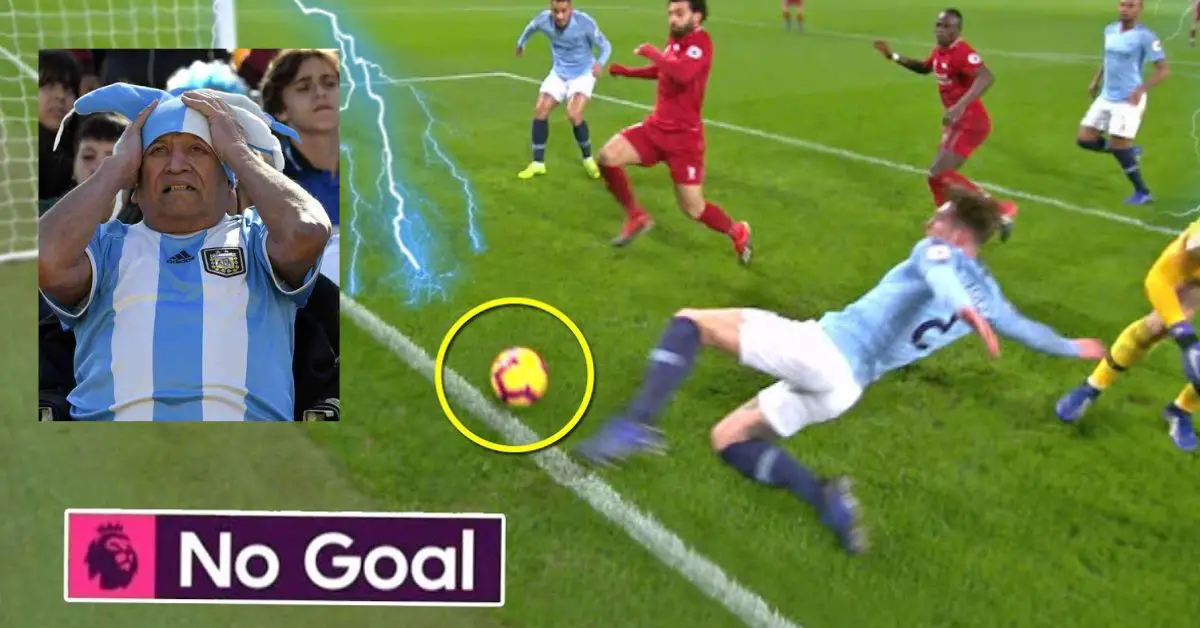In the fast-paced sport of soccer, the art of defense is just as vital as the thrill of scoring goals. In defense, you might have come across the word clearance and wondered, “What are clearances in soccer?”
Short Answer: Clearances are the defensive moments where players either kick or head the ball away from their own goal, keeping opponents from scoring.
We are diving into the art of clearances, exploring their significance and the different techniques players employ to ensure their team’s safety.
What Are Clearances in Soccer?
Clearances in soccer refer to essential defensive maneuvers employed by players to prevent their opponents from scoring. These maneuvers involve swiftly kicking or heading the ball away from their team’s goal area.
Clearances are vital defensive actions executed under pressure to maintain a safe distance between the ball and your own goal, thwarting the opposing team’s scoring opportunities. These actions are used to sway the ball away from your own goal.
Types of Clearances
There are a range of distinct clearance techniques that empower players to tactically repel impending threats. These methods not only provide a means to avert danger but also exemplify the diversity of skills within a team’s defensive arsenal.
| Type of Clearance | Description |
|---|---|
| By Header | When players utilize their heads to redirect the soccer ball away from their goal area. These are commonly used during aerial challenges, especially from high crosses or corner kicks. |
| By Kick | When players deliver powerful kicks to propel the ball away from danger. These are most commonly used and can be executed while sliding too. |
| By Punch | These clearances are executed by Goalkeepers in their area when they punch out the ball away from danger in situations when they can’t catch the ball. |
Importance of Controlled Clearances
While the primary goal remains to prevent opposition goals, the manner in which the ball is cleared can influence an attacking transition or defensive transition in the next play of the game. Controlled clearances offer a balanced approach that transcends mere defensive actions.
| Benefits | Description |
|---|---|
| Maintaining Possession | By opting for accuracy and targeting teammates, players can initiate a fresh offensive or regroup defensively, enabling the team to dictate the game’s rhythm. |
| Minimizing Counterattack Opportunities | A hasty or ill-judged clearance can inadvertently set up the opposing team for a swift counterattack. Controlled clearances reduce the likelihood of this scenario. |
| Creating Breathing Room | A well-placed clearance can temporarily relieve pressure, allowing the team to regain composure and strategic positioning. |
| Transitioning to Attack | A deliberate clearance to a teammate in a more advanced position can instantly switch the play and catch the opposition off guard, leading to goal-scoring opportunities. |
| Dampening Momentum | Opponents’ momentum can be dampened by skillful clearances that strategically disrupt their advancing plays. This grants the defensive team a vital pause to regroup and recalibrate their positioning. |
Records: Most Clearances
Premier League
In the English Premier League, Sylvain Distin holds the record for most clearances in the competition with 3,167 clearances in the competition. Phil Jagielka comes second with 3,000 clearances whereas, Gary Cahill is 3rd with 2,935 clearances.
La Liga
In the Spanish league, La Liga, the record for most clearances goes to Iñigo Martínez. He currently plays for FC Barcelona in the 2023/24 season. Martinez has a record of 1,715 clearances of which 883 were headed clearances.
FAQ
When a player kicks, heads, or punches (in the case of the goalkeeper) the ball away from the incoming opposition away from his goal, it is counted as a clearance.
When a player clears the ball away from the goalline or near the goal line, it is called a goal-line clearance
Absolutely. Goalkeepers play a vital role in initiating clearances. Their kicks can transition the ball from defense to attack. They can also punch the ball away which counts as clearance.











